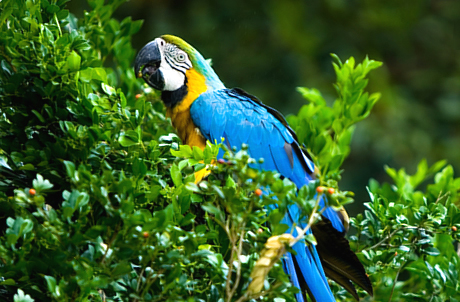Join our hands to conserve nature!
30–100 cm, depending on species
0.13-1.70 kg, depending on species
Forests and woodlands in Central and South America

30–100 cm, depending on species
0.13-1.70 kg, depending on species



Forests are continuously being destroyed by logging, mining and road construction. They are also cleared for agriculture and cattle ranching. In many parts of the macaws’ range, the rate of deforestation is high. These birds have not only been eradicated from their homes, but are also captured for their brilliant colours. Wild macaws are popular targets for poachers, who trade them locally or internationally as exotic pets. The massive illegal trade has caused declines in many species. During 18th to 19th century, 5 macaw species were driven to extinction by over-hunting.